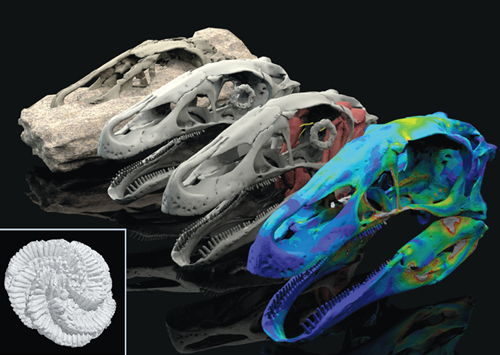The Best Strategy To Use For Restoration Service
Wiki Article
The 7-Minute Rule for Restoration Service
Table of ContentsThe 9-Minute Rule for Restoration ServiceRestoration Service Things To Know Before You Buy3 Simple Techniques For Restoration ServiceThe Facts About Restoration Service RevealedThe 4-Minute Rule for Restoration Service
Do you know exactly how to label your fossil collection? Read our brand-new Archival Noting write-up in the 'Learn More About Fossil Prep Work' Area!Till a time maker is invented, fossils stand for the only information we have about extinct pets. The details consisted of in fossils can be established as well as enhanced by correct prep work methods. This information can also be preserved for future generations through correct preservation as well as storage space. The subjects in these web pages will help you to achieve the objectives of both prep work and preservation of fossil specimens.
The details uploaded here is intended to assist the avocational paleontologist assistance preserve as well as conserve their specimens. The Florida Museum of Nature and its team are exempt for any kind of damages to fossil samplings resulting from misconception of the provided products. Consolidants, or hardeners as they are much more frequently called, are frequently the collection agency's first line of protection against damage of specimens in their collection, specifically those specimens consisted of improperly mineralized bone so usually discovered in the Pleistocene river deposits or coastal marls of Florida et cetera of the Southeast.
Restoration Service - The Facts
Pure materials consolidants are resins which have been dissolved in a solvent, such as Butvar (polyvinyl butyral) granules dissolved in acetone. Consolidants liquified in acetone must just be utilized on completely dry specimens, since even a small quantity of dampness in the specimen can respond adversely with the consolidant ruining its desired buildings.and also Europe stick with a couple of attempted and true consolidants which are understood to have a low propensity for crosslinking as well as which do not lose their consolidant properties with time. Principal among these are polyvinyl butyral (Butvar), a thermoplastic resin, and also Acryloid B-72, an acrylic material. PVA (polyvinyl acetate), made use of as a pure material is still readily available, however a lot of individuals have actually changed to Acryloid B-72, which is harder, a lot more durable, and shows much less adaptability.
Slim and watery need to be worried. The suggestion is to get the material where it's needed, as well as in order to permeate the specimen's surface area and also carry resin down into the inside of the fossil bone, the consolidant needs to be thin otherwise it will be transferred on the surface of the bone just, like shellac or varnish utilized in the past.
Excitement About Restoration Service
The second class of consolidants, the solutions are generally used to treat damp or wet specimens. Emulsions are suspensions, in water, of a resin and solvent remedy, and like Elmer's Glue, a popular polyvinyl acetate solution, are normally white, milklike combinations (Restoration Service). As consolidants go, emulsions are not as preferable as pure materials.
As discussed earlier, Elmer's Glue, is a sort of polyvinyl go to these guys acetate solution, as well as can be utilized on damp samplings. Due to the fact that proprietary (commercial) brand names such as Elmer's normally keep their solutions secret, as well as even regularly transform their formulas, museum conservators do not such as to use these business PVA emulsions. However, Rhoplex, Centimeters Bond M3 as well as Union Carbide AYAF PVA emulsions are especially made and cost conservation objectives.
The Buzz on Restoration Service
The most crucial axiom of conservation is:. To put it simply, do just possible to a specimen that will certainly transform its nature. When handling durable wet samplings, the finest technique may be this post to put the sampling in a slow-drying chamber, (see Preparation and also Therapy of Sub-fossil Bone) instead of treating the specimen with a water based solution material like Rhoplex or Centimeters Bond M3.Over the previous hundred approximately years that fossil accumulating has actually been a valid scientific quest, as well as a popular past-time for enthusiasts, a selection of adhesives have actually been made use of to glue fossil bone. The adhesives being used at any type of given time during this period showed the existing state of chemistry and also modern technology, so naturally, the diversity as well as high quality of adhesives has altered through time.

When recovering damp fragile samplings from damp atmospheres, the melted carbowax approach might be the only way to recuperate the sampling, but it is not relatively easy to fix without ruining the stability of the sampling. When repairing a broken elephant thigh, which may be studied and taken care of, the preparator could decide for using epoxy concrete to stop the sampling from continuously re-breaking.
The 15-Second Trick For Restoration Service
From the earliest times, pet adhesives made from bones, fish, and also hides were the essential for fossil repair work. In fact pet adhesives, which probably date back to ancient times, were used for nearly every sticky requirement, and also can still be purchased today. Because of their integral problems such as yellowing, brittleness as well as instability, they must no more made use of on fossils - Restoration Service.This course of adhesives is mentioned due to the fact that of its extended period of usage. In museums and at fossil public auctions, it is not unusual to locate samplings which have been repaired with these adhesives. Alcohol is a solvent for click over here now these adhesives, but much of the older specimens will need an excellent soaking prior to the glued joint will certainly liquify.
Chemists may extol the merits of the latest adhesive from their labs, but only time can evaluate the performance and durability of a sticky. Many turn yellow with age or are prone to weak damage, where also a slight jar or shock will trigger the glued joint to break. Various other polymers might cross-link with time or upon long term exposure to ultraviolet light triggering shrinking that can seriously harm a fossil which has actually been fixed with them.
Report this wiki page